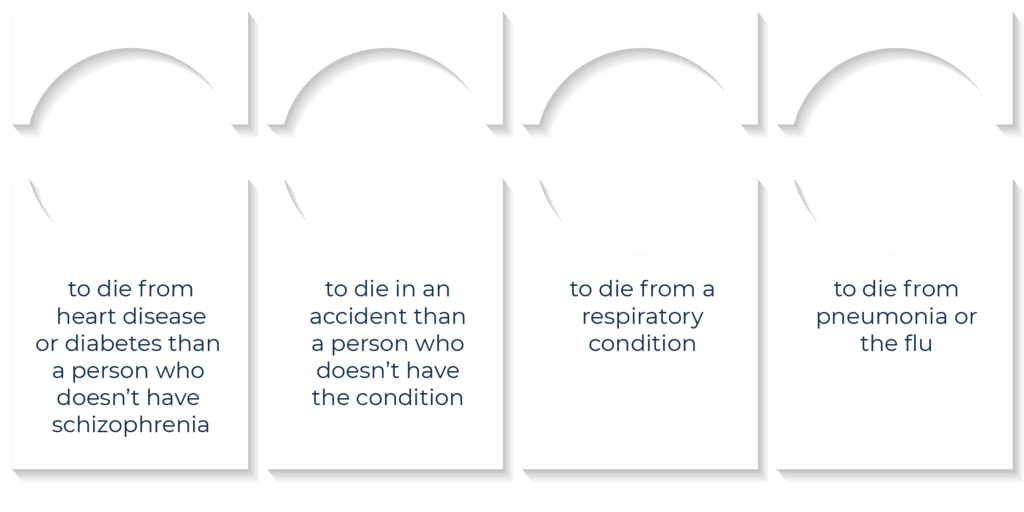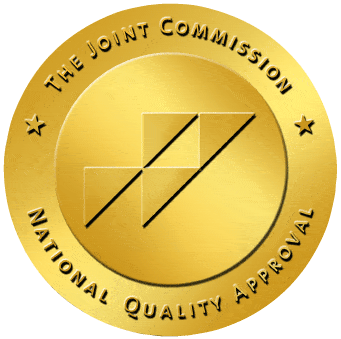Fast Facts About Mental Illness:
Discover the Facts About the Most Common Mental Health Issues and Their Impacts

Fast Facts About Mental Illness:
Discover the Facts About the Most Common Mental Health Issues and Their Impacts
Table of Contents

Mental illness is a serious medical condition that can affect a person’s ability to function in their daily life. Suffering from mental illness means navigating the world differently than a person who doesn’t.
There are millions of Americans who navigate life with a mental health diagnosis, yet many are still going untreated due to the stigma connected to mental illness.
What Are the Most Common Mental Illnesses?
Table of Contents
Mental illness is a serious medical condition that can affect a person’s ability to function in their daily life. Suffering from mental illness means navigating the world differently than a person who doesn’t. There are millions of Americans who navigate life with mental health diagnosis, yet many are still going untreated due to the stigma connected to mental illness.
What Are the Most Common Mental Illnesses?
Most Common Mental Illnesses
Anxiety Disorders:
An estimated 18.1 percent of Americans have anxiety disorders. This includes conditions such as social anxiety disorder, generalized anxiety disorder, phobias, and separation anxiety disorder, along with obsessive compulsive disorder and a few others. A person can experience more than one anxiety disorder at a time. Symptoms associated with anxiety include:- Nervousness
- Restlessness
- Sweating
- Weakness
- Difficulty controlling one’s worries
Major Depression:
An estimated 6.9 percent of Americans live with major depression. This is equal to 16 million people. While it may not be the most prevalent disorder, depression is responsible for being the leading disability cause worldwide. Major depression causes symptoms that include: 2:
- Persistent feelings of sadness, hopelessness, or helplessness
- Difficulty sleeping
- Appetite changes
- Suicidal thoughts
Schizophrenia:
An estimated 1.1 percent of Americans (2.4 million people) have schizophrenia. This condition is a chronic and serious mental health condition that can result in symptoms of losing touch with reality as well as experiencing hallucinations and delusions.
Some people may also experience symptoms associated with the condition that can keep a person from speaking or expressing emotions. This can dramatically affect a person’s ability to navigate the world, and they may require significant care.
Borderline Personality Disorder:
About 1.6% of the U.S. population suffers from borderline personality disorder. Common signs and symptoms include:- Fear of abandonment
- Unstable relationships
- Impulsive, self-destructing behaviors
- Extreme emotional swings
Dementia:
5.8 Million Americans are living with Alzheimer’s and that number is expected to rise. Early signs and symptoms include:
- Memory loss
- Difficulty with familiar tasks
- Problems with language
- Disorientation to time and place
- Poor or decreased judgement
- Problems keeping track of things
- Misplacing items
- Changes in mood or behavior
- Personality changes
Dual Diagnosis
Of those who live with mental illness in the United States, many experience a co-occurring mental health disorder. This is when a person experiences a substance abuse disorder as well as a mental illness. 5 An estimated 10.2 million adult Americans have a co-occurring mental illness (also called a dual diagnosis). This represents 50.5 percent of Americans with a substance abuse disorder.
Having a co-occurring mental health disorder can make treating a mental illness more difficult. 5 It’s not uncommon to see multiple health co-morbidities or turning to drugs and alcohol as a means to self-medicate unaddressed issues. Learning how to live a life free from drugs and alcohol as well as medication management can help overcome mental illness with time and considerable medical support. Healing is possible with time and treatment.
What Are the Largest Misconceptions About Mental Illness?
Common Myths About Mental Illness

One of the most common misconceptions about mental illness is that a person has control over the way they think and feel.
Many people do not understand that mental illnesses are the result of chemical imbalances in the body that can affect a person’s mood and behavior. 2
Misconceptions About Gender
Another common misconception is that men and women are equally affected by mental illness. According to the National Institutes of Mental Health, women experience mental illness at a rate of 1.5 to 2.5 times higher than men do.3
However, men experience higher rates of panic disorders, like PTSD, as well as higher rates of obsessive-compulsive disorder.
Only Some Mental Illnesses Lead to Violence
Some misconceptions are harmful, including the belief that all people with mental illness are violent. In fact, people suffering from mental illness such as schizophrenia are far more likely to harm themselves than be violent themselves.
People with severe mental illness are more than 10 times more likely to be the victim of a violent crime than the general population.
Some Treatments Have Misconceptions
Misconceptions about treatment can also be harmful, including the idea that Electroconvulsive therapy (ECT) is painful and horrible. ECT is an effective treatment solution for people with severe depression unaffected by antidepressants.
Finally, misconceptions can impact daily activities for those living with mental illness. Some people believe that people with mental illness aren’t smart or can’t hold employment. In reality, populations of people who deal with mental illness reflects the same variances see in the general population.
This means some people are more impacted by their differences than others. It also means that functioning in the workplace is similar to others. Someone with a mental illness is also unlikely to miss more work than someone with a chronic physical health condition like diabetes or high blood pressure.
Mental Illness Risk Factors
People who have experienced a major life event, such as a death or divorce, may also trigger a psychological illness, such as depression or anxiety. Other triggers may include work stress, financial strain, social isolation, and lack of or insufficient housing.
Environment and other risk factors can also lead to mental illnesses. This includes conditions such as depression. 3 Five depression risk factors commonly listed include:
- Family history of depression
- Low educational achievement
- Previous history of depression
- Younger age
Warning Signs of a Mental Health Condition
Most Common Mental Illnesses
Last year 6.9% of American adults had at least one depressive episode
18.1% of american adults live with an anxiety disorder such as obsessive compulsive disorder, posttraumatic stress disorder or phobias
70%-90% of people who receive proper treatment for mental health conditions see a reduction in symptoms
Mental Illness and Long-Term Health
Statistics on People with Mental Health Disorders

When a person suffers from a mental illness, their mental well-being isn’t the only factor affected. A person’s physical health can be significantly compromised by suffering from a mental illness.
According to U.S. News & World Report, a person with schizophrenia has a 25 years shorter lifespan than a person who does not. 3 In addition to this finding, a person with schizophrenia is also:
- 3.4 times more likely to die from heart disease or diabetes than a person who doesn’t have schizophrenia
- 3.8 times more likely to die in an accident than a person who doesn’t have the condition
- 5 times more likely to die from a respiratory condition
- 6.6 times more likely to die from pneumonia or the flu
Quality of Life
While the statistics may not be exactly the same for each mental illness, those who experience mental illness typically do not live as well as those who don’t.
Those dealing with mental illness may not prioritize or feel like exercising. They may not have access to healthy foods or resources to prepare them. They may also turn to substances such as drugs, cigarettes, and alcohol abuse that can shorten lifespan. 3
Practicing Wellness is Good for Long-Term Health
Many people who experience mental illness struggle to emphasize wellness, often because they are trying to make it through each day. Participation in programs where wellness is emphasized in addition to medical treatments can make a difference in helping to extend lifespans.
Because mental illness is a chronic condition, a person can suffer from it their entire life. Therefore, it’s important to receive support for both mental and physical health.
Of those who live in developing countries and have mental health disorders remain untreated.
Facts About Lack of Treatment
Many people who need treatments for mental illnesses do not receive them. According to the Anxiety and Depression Association of America, only an estimated 43.2 percent of Americans with generalized anxiety disorder receive treatment – this leaves more than half of the people who should receive treatment who aren’t. 1
These numbers are much higher for those who live in developing countries, where an estimated 75 percent of people who have mental health disorders remain untreated.
The most common mental disorders worldwide include phobias, major depressive disorders, and social phobia.
Not only are adults affected by mental illness, but young people are as well.
An estimated 25.1 percent of those between the ages of 13 and 18 years old experience anxiety disorders, according to the Anxiety and Depression Association of America.
Young people who suffer from anxiety disorders are at greater risk for experiencing additional health conditions. These include poor school performance and greater likelihood for engaging in substance abuse.
Many mental health conditions begin in adolescence and then manifest in adulthood.
For example, those with obsessive-compulsive disorder often first experience their symptoms during their childhood or teenage years. 5
These symptoms often manifest itself as eating disorders, substance abuse, or depression.
Mental illness severely affects a person’s ability to perform their work and relationships. According to NAMI, mental illness costs those who suffer from it a collective $193.2 billion in lost earnings annually. 1
Sadly, mental illness can lead a person to commit suicide and tragically end their life. According to Johns Hopkins Medicine, most people who commit suicide suffer from a mental illness. This includes depression and substance abuse. 5
Of these, an estimated four times as many men as women commit suicide. However, women attempt suicide at a higher rate than men do.
Young people are also affected. Suicide is the second-leading cause of death among those ages 10 to 34 in the United States, according to NAMI.
Most Common Mental Health Treatments
Additional Mental Health Treatments Available
Where Do I Go From Here?
Talking to a doctor or reaching out to community health services should be the first step in addressing a personal mental disorder or mental health concern. Recognizing that mental illness is a common, treatable condition is also an important step in helping a person get the help they need.
Treating co-occurring disorders as well as addressing a physical health is vital to helping those who struggle with various conditions.
Mental illness affects a significant number of young people and adults in America. There are many misconceptions about it, including that a person experiences mental illness due to personal weakness. Empowering yourself with knowledge is a vital step towards breaking the stigma connected to mental health treatment.
This information is brought to you by Arrow Passage Recovery.
Resources
- https://www.nami.org/Learn-More/Mental-Health-By-the-Numbers
- https://www.ncbi.nlm.nih.gov/books/NBK92254/
- https://health.usnews.com/health-news/articles/2012/04/27/can-your-mental-health-affect-your-longevity
- https://adaa.org/about-adaa/press-room/facts-statistics
- https://www.hopkinsmedicine.org/healthlibrary/conditions/mental_health_disorders/mental_health_disorder_statistics_85,p00753]














